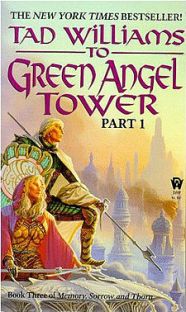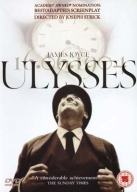I always suggest that authors build a backlog of short stories for submission to contests and various publications. But how do you know where to sell your work?
 To know that, you must know the genre of the work you are trying to sell. So, what exactly are genres? Publisher and author Lee French puts it this way, “Literary genres are each a collection of tropes that create expectations about the media you consume.”
To know that, you must know the genre of the work you are trying to sell. So, what exactly are genres? Publisher and author Lee French puts it this way, “Literary genres are each a collection of tropes that create expectations about the media you consume.”
So, genres are categories the publishing industry developed to enable shoppers in bookstores to quickly find what they are looking for. They’re like a display of apples at the grocery store – many baskets of apples are situated there, but each variety is a little different from its neighbor.
The difference in taste (tart or sweet) and texture (firm or soft) are what we gravitate to when we shop for apples.
In novels, the different flavors within a genre are created by the tropes the author has chosen to include in the narrative.
When you open the Submittable App and begin shopping for places to submit your work, you may find the list of open calls confusing. Many times, contests, publications, and anthologies are genre-specific. However, sometimes they don’t clarify which subgenres within that overarching category they are looking for.
Writers of nonfiction and poetry have no problem because their work is targeted to a magazine with a specific readership.
How do you decide who will be most receptive to your story? You must look at the tropes you have included in the narrative.
This list of genres and what they represent has appeared on this blog before. Genre is determined by the author’s intention, approach, how resolutions happen, and the ideas explored. The various tropes the authors employ form these industry-wide distinctions.
 Mainstream (general) fiction—Mainstream fiction is a general term that publishers and booksellers use to describe works that may appeal to the broadest range of readers and have some likelihood of commercial success. Mainstream authors often blend genre fiction practices with techniques considered unique to literary fiction. It will be both plot- and character-driven and may have a style of narrative that is not as lean as modern genre fiction but is not too stylistic either. The novel’s prose will at times delve into a more literary vein than genre fiction. The story will be driven by the events and actions that force the characters to grow.
Mainstream (general) fiction—Mainstream fiction is a general term that publishers and booksellers use to describe works that may appeal to the broadest range of readers and have some likelihood of commercial success. Mainstream authors often blend genre fiction practices with techniques considered unique to literary fiction. It will be both plot- and character-driven and may have a style of narrative that is not as lean as modern genre fiction but is not too stylistic either. The novel’s prose will at times delve into a more literary vein than genre fiction. The story will be driven by the events and actions that force the characters to grow.
Science fiction—Futuristic settings, futuristic science and technology, space travel, time travel, faster than light travel, parallel universes, and extraterrestrial life are the core of science fiction. BE WARNED: if you use magic for any reason, you are NOT writing any form of sci-fi. The tropes that define subgenres are:
- Hard Sci-fi is characterized by rigorous attention to accurate detail in physics, chemistry, and astrophysics. Emphasis is placed on accurately depicting worlds that more advanced technology may make possible.
- Soft Sci-fi is characterized by works based on social sciences such as psychology, economics, political science, sociology, and anthropology.
- Other main sub-genres of Sci-fi include Space-operas, Cyberpunk, Time Travel, Steampunk, Alternate history, Military, Superhuman, Apocalyptic, and Post-Apocalyptic. Go to the internet and look up the typical tropes of these subgenres. Then write me an awesome Space Opera – my favorite subgenre of sci-fi.
The main thing to remember is this: Science and Magic cannot coexist in the genre of science fiction. The minute you add magic to the story, you have fantasy.
 Fantasy is a fiction genre that commonly uses magic and other supernatural phenomena as a primary plot element, theme, or setting. Like sci-fi and literary fiction, fantasy has its share of snobs when it comes to defining the sub-genres. The tropes are:
Fantasy is a fiction genre that commonly uses magic and other supernatural phenomena as a primary plot element, theme, or setting. Like sci-fi and literary fiction, fantasy has its share of snobs when it comes to defining the sub-genres. The tropes are:
- High fantasy is defined as fantasy fiction set in an alternative, fictional world, rather than the real, or “primary” world, with elves, fairies, dwarves, dragons, demons, magic or sorcery, wizards or magicians, constructed languages, quests, coming-of-age themes, and multi-volume Often the prose is more literary, and the primary plot is slowed by many side quests. Think William Morrisand J.R.R. Tolkien.
- Epic Fantasy is often serious in tone and epic in scope. It usually explores the struggle against supernatural, evil forces.Epic fantasy shares some typical characteristics of high fantasy and includes fantastical elements such as elves, fairies, dwarves, dragons, demons, magic or sorcery, wizards or magicians, constructed languages, quests, coming-of-age themes, and multi-volume narratives. Tad Williams’s Memory Sorrow and Thorn is classic Epic Fantasy.
- Paranormal Fantasy–Paranormal fantasy often focuses on romantic love. It includes elements beyond scientific explanation, blending themes from all speculative fiction genres. Think ghosts, vampires, and supernatural.
- Urban fantasy can occur in historical, modern, or futuristic periods, and the settings may include fictional elements. The prerequisite is that they must be primarily set in a city.
Horror—Every genre has a subgenre of horror: Wikipedia says, “Horror fiction, horror literature and also horror fantasy are genres of literature, which are intended to, or have the capacity to frighten, scare, or startle their readers by inducing feelings of horror and terror. Literary historian J. A. Cuddon has defined the horror story as “a piece of fiction in prose of variable length… which shocks or even frightens the reader, or perhaps induces a feeling of repulsion or loathing.” In Romance, the horror subgenre might be Gothic or Paranormal, but the focus must be on a developing romance. The roadblocks will not feature blood or gore, but terror and a perception of danger will be a feature the pair must overcome.
Romance—Novels of this type of genre fiction place their primary focus on the relationship and romantic love between two people and must have an emotionally satisfying and optimistic ending. The story will be character-driven, and the roadblocks must be believable but surmountable.
I mention Literary Fiction last because it is the most complicated and least understood genre of all.
 Literary fiction can be adventurous with the narrative. The style of the prose has prominence and may be experimental, requiring the reader to go over certain passages more than once. Stylistic writing, heavy use of allegory, the deep exploration of themes and ideas form the core of the piece.
Literary fiction can be adventurous with the narrative. The style of the prose has prominence and may be experimental, requiring the reader to go over certain passages more than once. Stylistic writing, heavy use of allegory, the deep exploration of themes and ideas form the core of the piece.
Be careful when presenting yourself and your work to the prospective publisher. Never submit anything that is not your best work, and do not assume they will edit it because they won’t. No publisher will accept poorly written work or sloppily formatted manuscripts.
Read a sample of the work they publish and only submit the work that best fits their publication.
And most of all, good luck! May your work land on an editor’s desk the day they are looking for a story just like that!








Reblogged this on OPENED HERE >> https:/BOOKS.ESLARN-NET.DE.
LikeLiked by 1 person
Thank you so much, Michael! I hope your holidays are going well!
LikeLiked by 1 person
Reblogged this on Jeanne Owens, author.
LikeLiked by 1 person
Thank you for the reblog! And I hope your holidays are merry!
LikeLike
You’re welcome. And I hope your holidays are merry, as well!
LikeLiked by 1 person
Reblogged this on Chris The Story Reading Ape's Blog.
LikeLiked by 1 person
❤ Thank you for your kindness, Chris! Happy Holidays ❤
LikeLiked by 1 person
You too, Connie 🤗❤️🤗
LikeLiked by 1 person
Reblogged this on Kim's Musings.
LikeLike
Interesting post but . . . you missed out crime, thrillers, chillers, historical, and adventure 🙂
LikeLiked by 1 person
Not missed–just not included in this particular post. They have unique tropes that need a post all of their own!
LikeLike
Ah – ok 🙂
LikeLiked by 1 person
Pingback: Identifying Tropes and Subgenres part 2 – Crime, Thrillers, Historical, and Westerns #amwriting | Life in the Realm of Fantasy